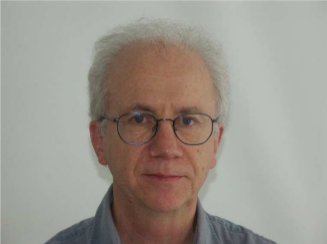In memoriam: Prof. Ph. Pruzan (1941-2005)

Philippe Pruzan died suddenly on November 13 from a brain haemorrhage. He was a well known physico-chemist, with a very broad scientific knowledge. He was also a generous man and we will remember his sense of humour. He was a good friend. We will miss him.
He began his career in the CNRS in 1966, at the Laboratoire de Chimie-Physique (physico-chemistry laboratory) of the Université Pierre et Marie Curie, in the Experimental Thermodynamic group. There, he made a theoretical model for the phonon mediated thermal conductivity, work that was his "thèse de troisième cycle".
After two years of military service, spent in Tunisia as a physics teacher, he obtained his "Doctorat d'Etat" in 1976 on the experimental thermodynamics under high pressure, work during which he elaborated a new analysis technique, the differential piezothermal analysis. This technique was applied to study phase transformations, mostly melting, in molecular compounds. He made crucial contributions to the understanding of the pre-melting behaviour, identifying the pre-melting effect as a second order phase transformation, first step of the de-stabilization of the solid phase.
He spent then one year in Los Alamos Laboratory in 1980-81, where he collaborated with D.H. Liebenberg and R.L. Mills on the study of the ammonia melting.
Returning to France, he joined Jean Michel Besson in the newly created laboratory "Physique des Milieux Condensés" where he created a group to study the effects of high pressure on molecular solids. The main topics studied by this research group were:
- The effect of high pressure on the hydrogen bonds, especially in ammonia and water. One of the most impressive result on this subject was the discovering of quantum paraelectric state in water-ice at low temperature (T < 100 K) and high pressure (p > 62 GPa), thermodynamic conditions where the energy barrier of the double well potential is equal to the zero point motion energy.
- The stability of the chemical bond. This kind of study began by the evidence of the aromatic cycle dissociation in benzene above 21 GPa. Philippe Pruzan showed that the multiple bonds molecular solids are unstable at very high density, and that the products of this decomposition have a very low compressibility and a great chemical stability.
- The ferroelectricity loss in perovskites began somewhat later, in 1989 on the model compound KNbO3. By Raman scattering, he demonstrated that the local structures have a symmetry different from the long range symmetry deduced from X-ray diffraction. He explained these differences by the characteristic time scales of the interactions involved in the two measurement processes.
In 1994, Philippe Pruzan succeeded Jean Michel Besson as director of the laboratory Physique des Milieux Condensés, position at which he remained until the end of 2000.
He was about to reach the age at which, in France, one has to retire, but did apply for an Emeritus position. He had many scientific projects on the ferroelectric perovskites, on the protonic disorder in ice at very high pressure, or on the pressure induced polymerization.
- Au rendez-vous des bons copains
- Y avait pas souvent de lapins
- Quand fun d'entre eux manquait a bord
- C'est qu'il était mort
- Oui, mais jamais, au grand jamais
- Son trou dans l'eau n'se refermait
- Cent ans après, coquin de sort
- Il manquait encore
- Georges Brassens
 EHPRG
EHPRG